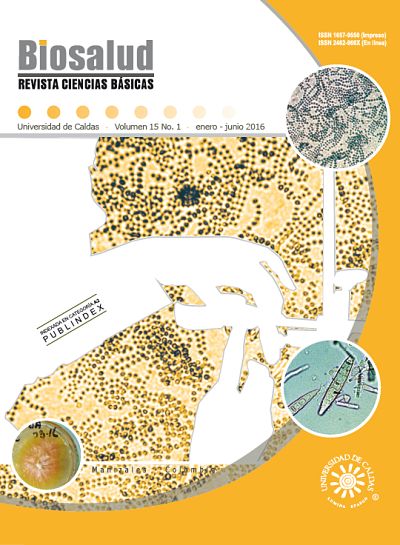Autores/as
Resumen
Mediante un sistema robótico que consta de un sistema de cadena y una plataforma móvil en el piso del tanque de marcha, que ajusta la posición final de la cámara submarina, se realizó análisis de la marcha y posterior cálculo de los ángulos articulares en ambiente acuático de 4 individuos voluntarios. El ángulo filtrado de flexión plantar del tobillo durante la fase de despegue del pie en el ciclo de marcha subacuática es mayor en el género femenino (122.7 ± 1.1) que en el masculino (118.4 ± 2.5). El ángulo filtrado de dorsiflexión del tobillo durante la fase de apoyo en el ciclo de marcha subacuática presenta “ligeras” diferencias, siendo mayor en el género masculino (85.2 ± 2.5) que en el femenino (85.0 ± 1.0). En conclusión, se pueden cuantificar las variables cinemáticas de la marcha humana (parámetros angulares del tobillo), en individuos sanos, usando video fotogrametría como sistema computarizado de captura de imágenes subacuáticas, en el tanque de marcha.
Palabras clave
Citas
2. Hay L, Wylie K. Towards evidence-based emergency medicine: best BETs from the Manchester Royal Infirmary. BET 4: Hydrotherapy following rotator cuff repair. EmergMed J 2001; 28(7):634-5.
3. MaddaliBongi S, Del Rosso A. How to prescribe physical exercise in rheumatology. Reumatismo 2010; 62(1):4-11.
4. Vlak T. Spondyloarthritides: principles of rehabilitation. Reumatizam 2010; 57(2):31-8.
5. Vismara L., Romei M., Galli M, Montesano A, Baccalaro G., Crivellini M, et al. Clinical implications of gait analysis in the rehabilitation of adult patients with “Prader-Willi” Syndrome: a cross-sectional comparative study (“Prader-Willi” Syndrome vs matched obese patients and healthy subjects). J NeuroengRehabil 2007; 10(4):14.
6. Davis RB, Ounpuu S, Tybursky D, Gage JR. A gait analysis data collection and reduction technique. Human MovSci 1991; 10.
7. Osorio JH, Valencia MH. Bases para el entendimiento del proceso de la marcha humana. ArchMed (Manizales) 2013; 13(1):88-96.
8. Miyoshi T, Shirota T, Yamamoto S, Nakazawa K, Akai M. Functional roles of lower-limb joint moments while walking in water. ClinBiomech (Bristol, Avon) 2005; 20(2):194-201.
9. Schutz G, Haupenthal A, Roesler H. Estudio dinamométrico de la marcha humana en el medio acuático. Rev Digital (Buenos Aires) 2005; 10(81):15-22.
10. Barela AM, Stolf SF, Duarte M. Biomechanical characteristics of adults walking in shallow water and on land. J ElectromyogrKinesiol 2006; 16(3):250-6.
11. Romanovitch D, Vera I, Ferretti E, Costa C. Estudio comparativo de los parámetros angulares de la marcha humana en ambiente acuático y terrestre en individuos adultos jóvenes sanos. RevBrasMed Deporte 2007; 13(6): 35-47.
12. Barela AM, Duarte M. Biomechanical characteristics of elderly individuals walking on land and in water. Brazil J ElectromyogrKinesiol 2008; 18(3):446-54.
13. Miyoshi T, Shirota T, Yamamoto SI, Nakazawa K, Akaia M. Effect of the walking speed to the lower limb joint angular displacements, joint moments and ground reaction forces during walking in water. DisabilRehabilit. 2004; 26:724-32.
14. Infantini RM, Rodrigues E. Descrição cinemática qualitativa da marcha normal dentro da água. RevFisioter UNICID 2000; 1:37-44.
15. Becker RA, Gehm F, Martínez FG, Loss JF. Análise cinemática da marcha humana em ambiente aquático Parte II: diferentes profundidades. Anais do X Congresso Brasileiro de Biomecânica; 2003 Minas Gerais, p. 111-4.
16. Gehm, F, Becker R A, Martínez FG, Loss JF. Análise cinemática da marcha humana em ambiente aquático - parte I: terra x água. In: Anais X Congresso Brasileiro de Biomecânica, 2003; Minas Gerais, p. 107-110.
17. Ervilha UF. Estudo da variação angular da articulação do joelho e do sinal eletromiográfico no domínio temporal durante a marcha humana em ambiente aquático. Dissertação. Escola de Educação Física e Esporte da Universidade de São Paulo. São Paulo; 1999.
18. Villa MA, Gutiérrez GE, Pérez MJ. Consideraciones para el análisis de la marcha humana. Técnicas de videogrametría, electromiografía y dinamometría. RevIng Biomédica 2008; 2(3)16-26.

 pdf
pdf
 FLIP
FLIP


















